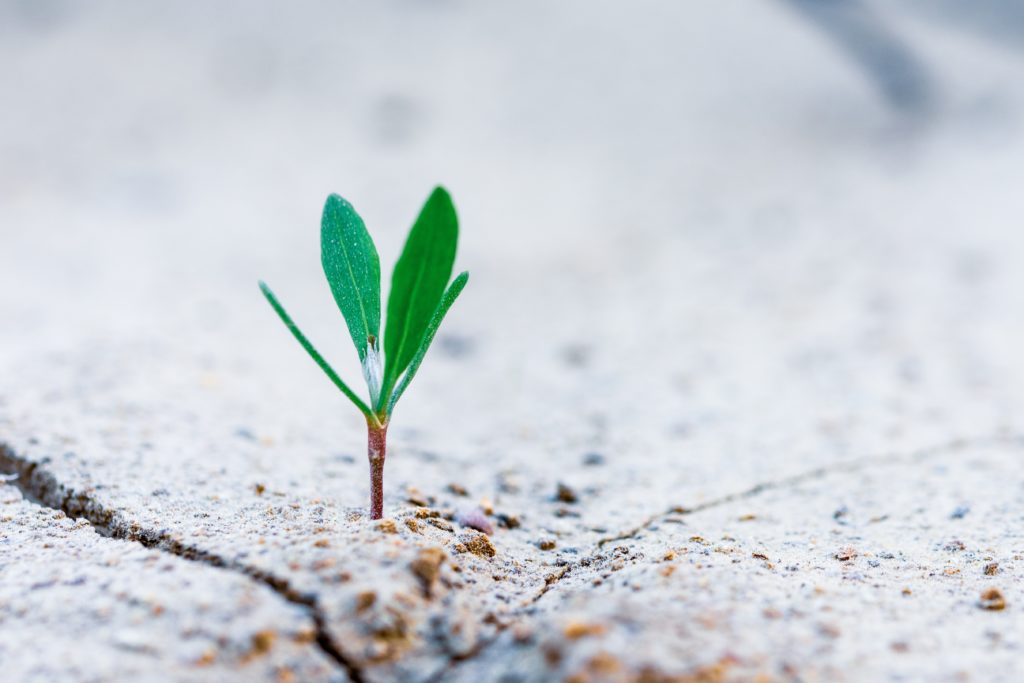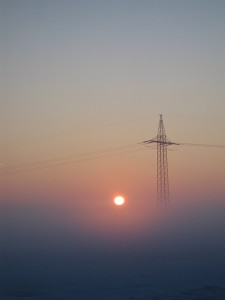
The resurrection of the dead is usually a topic for funerals – but it’s good to think about it just on a regular Sunday. Why? Because the resurrection of the dead is a reality. In Christ, we are promised a bodily resurrection from death. So we need to look at it in concrete terms, asking the question: Do we really believe this?
(If you’re not sure what the “resurrection of the dead” is exactly, Paul explains it well in 1 Thessalonians 4:16-17.)
The Corinthians had doubts about the resurrection. Some were saying that there was no way dead people could actual come to life, and beginning in 1 Corinthians 15:35 we find Paul addressing this.
A Picture of the Resurrection
But someone will ask, “How are the dead raised? With what kind of body do they come?”
– v. 35
That seems like a reasonable question. But Paul responds, “You foolish person! What you sow does not come to life unless it dies. And what you sow is not the body that is to be, but a bare kernel, perhaps of wheat or of some other grain” (vv. 36-37).
Paul uses imagery of a seed to give us a picture of the resurrection. A farmer doesn’t sow a seed expecting to reap it in the same form – he anticipates transformation. A dry, dull-looking seed doesn’t stay as a seed. It becomes wheat or “some other grain.”
This is sort of what the resurrection will be like. When Jesus returns, you won’t be resurrected as a decayed corpse. You also won’t be resurrected frozen in time at whatever age you died or at your physical best. It’s going to be better; we just can’t understand it. Your resurrected body will be you, but it will be transformed. It’ll be as different as a flower is from its original seed.
The Potential for a Resurrection
We get a picture of the resurrection body the way seeds work. We also see the potential for this transformed body in God’s varied creation. Paul goes on:
For not all flesh is the same, but there is one kind for humans, another for animals, another for birds, and another for fish. There are heavenly bodies and earthly bodies, but the glory of the heavenly is of one kind, and the glory of the earthly is of another. There is one glory of the sun, and another glory of the moon, and another glory of the stars; for star differs from star in glory.
– vv. 39-41
God has created bodies suitable for walking, flying and swimming. Beyond that, He’s made Earth, which differs dramatically from the sun, which differs dramatically from the stars. Why should we be surprised that the resurrection body could be something different yet?
Paul’s point is: don’t limit God. Don’t dismiss the resurrection just because you can’t imagine it. Could you have imagined a giraffe if you hadn’t seen one first? Could you have imagined an anglerfish?
You might think, “How can a body that’s been blown up in battle be bodily resurrected? How can God resurrect somebody whose been cremated?” But God is capable of anything – just look at His creation.
Continuity & Transformation in the Resurrection
We see a picture of the resurrection in the way seeds operate, we see the potential for it in God’s creation, and we see in it both continuity and transformation.
So it is with the resurrection of the dead. What is sown is perishable; what is raised is imperishable. It is sown in dishonor, it is raised in glory. It is sown in weakness, it is raised in power.
– vv. 42-43
There’s continuity here. You won’t be raised as something that has zero connection with what you were before. But there is transformation. “What is sown is perishable; what is raised is imperishable.” Humans are perishable, but we won’t be raised that way.
Paul gives another way to think about it. “It is sown a natural body; it is raised a spiritual body. If there is a natural body, there is also a spiritual body” (v. 44). This doesn’t mean we’ll have a disembodied existence. Right now we have a body suited to the physical world – at the resurrection we’ll have a body suited to the spiritual world. This is also the main point of verses 45-49:
Thus it is written, “The first man Adam became a living being”; the last Adam became a life-giving spirit. But it is not the spiritual that is first but the natural, and then the spiritual. The first man was from the earth, a man of dust; the second man is from heaven. As was the man of dust, so also are those who are of the dust, and as is the man of heaven, so also are those who are of heaven. Just as we have borne the image of the man of dust, we shall also bear the image of the man of heaven.
How Does This Apply to Us?
Next week we’ll see how Paul applies this to us. But for now, just know that the resurrection of the dead makes sense, even though it may be difficult to imagine what kind of body we will have. A seed cannot imagine life as a flower – yet that is its destiny. We cannot fully imagine life in a resurrected body – yet, as Christians, that is our destiny. That is our hope.
Discussion Starters
- What is the resurrection of the dead?
- How is the resurrection body like a seed?
- What is Paul’s point in verses 39-41?
- What do you think about verses 42-49?
- How can all this apply to us?






